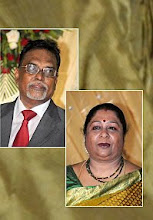Story of a city
LA. SU. RENGARAJAN
IN MID-1639, Francis Day, a British merchant of the East India Company, searching for a suitable place in the East Coast for establishing trade, anchored his small ship off a tiny coastal town known for long as Madaraasa-pattinam. He cordially met Venktadri Nayak who was ruling the coastal area up to Santhome as a representative of Vijayanagar Kingdom. The two signed an agreement on August 22, 1639 by which the company agent was permitted to build a fort there and commence friendly trade initially for two years. Imports would be duty-free. Half the income from trade was to be given to the Nayak. Thus was Madras born that day of August 1639. Construction of the fort, soon known as St. George Fort, began in 1640 with the arrival of a team of Englishmen from England aided by local labour.
Successive batches of British families who reached India preferred to settle down in Madaraasa-Pattinam, raising their own garden-bungalows. With the rapid expansion of the town, a cluster of nearby villages called Chennapattinam (named so by a chieftain of Venkatagiri dynasty of rulers in memory of his ancestor Chennappa Naidu) was also encroached upon. By a firman (official addict) issued in 1679 by the Nawab of Golkonda, villages of Santhome, Egmore, Kilpauk and Tiruvottriyur were leased to the British company on liberal terms. Judicial and administrative control was soon passed on to the British for a song. With Queen Elizebeth’s Proclamation of November 1, 1858 following the collapse of the Sepoy Muting of 1857, the British Crown took over the administration of British India from the East India Company. The city of Madras became the capital of Madras Presidency.
(The Hindu, 30:10:2007)
___________________________________________
Labels: Telugu/ culture


0 Comments:
Post a Comment
<< Home